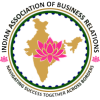Introduction
India’s healthcare sector is on the cusp of transformation, driven by technological advancements, evolving consumer expectations, and significant investments from both public and private sectors. With a burgeoning population and increasing health awareness, the future of healthcare in India holds promise for a more accessible, efficient, and patient-centered system. This blog explores the current state of India’s healthcare market and its future prospects.
Current State of the Healthcare Market
1. Market Overview
As of 2024, India’s healthcare market is valued at approximately $250 billion, with expectations to grow to around $450 billion by 2030. This growth is propelled by increasing healthcare expenditure, a rising middle class, and the expansion of health insurance coverage.
2. Key Segments
Hospitals and Healthcare Services: The hospital segment, which includes both private and public institutions, is the largest component of the healthcare market. Private hospitals, known for their advanced facilities and specialized care, are experiencing higher demand.
Pharmaceuticals and Biotechnology: India is one of the world’s largest producers of generic medicines, and the pharmaceutical industry plays a crucial role in providing affordable healthcare solutions. The biotechnology sector is also expanding, with innovations in drug development and diagnostics.
Medical Devices and Equipment: This segment includes diagnostic tools, surgical instruments, and wearable health devices. The growth is driven by increased healthcare investments and advancements in technology.
3. Market Dynamics
Government Initiatives: Programs like Ayushman Bharat aim to provide health insurance to millions of Indians, improving access to healthcare services and reducing out-of-pocket expenses. Additionally, the National Health Mission focuses on enhancing primary and secondary healthcare services.
Technological Advancements: Innovations in telemedicine, electronic health records (EHRs), and artificial intelligence (AI) are transforming how healthcare is delivered. Telemedicine, for instance, has gained traction, especially in remote and underserved areas.
Consumer Trends: There is a growing emphasis on preventive care and wellness. People are increasingly seeking health and wellness solutions, including fitness programs, health monitoring devices, and personalized medicine.
Challenges Facing the Healthcare Sector
1. Access and Equity
Despite advancements, there are disparities in healthcare access between urban and rural areas. Rural regions often face shortages of medical professionals and inadequate facilities, which can lead to unequal healthcare outcomes.
2. Infrastructure and Resources
The healthcare infrastructure in India faces challenges such as overcrowding in hospitals, insufficient beds, and a shortage of medical professionals. Investments in infrastructure and resource allocation are needed to address these issues.
3. Regulatory and Compliance Issues
Navigating the regulatory landscape can be complex, with varying standards and compliance requirements across different states. Ensuring adherence to regulations while fostering innovation is a balancing act for healthcare providers and businesses.
Future Outlook
1. Growth of Digital Health
Telemedicine: The adoption of telemedicine is expected to grow, improving access to healthcare services for those in remote areas. Continued advancements in technology and supportive policies will drive this growth.
AI and Big Data: Artificial intelligence and big data analytics are set to revolutionize diagnostics, treatment planning, and patient management. AI can assist in predicting health trends and personalizing treatment plans.
2. Expansion of Health Insurance
- Increased Coverage: With government initiatives and private insurance players expanding their offerings, health insurance penetration is expected to rise, leading to improved access to healthcare services and reduced financial barriers for patients.
3. Focus on Preventive Healthcare
- Wellness and Prevention: The shift towards preventive care will likely continue, with increased emphasis on lifestyle management, regular screenings, and health education. This trend aims to reduce the burden of chronic diseases and improve overall health outcomes.
4. Innovations in Medical Technology
Wearables and Smart Devices: The integration of wearable technology and smart devices for health monitoring will provide real-time data and enhance patient engagement in managing their health.
Biotechnology Advances: Continued research and development in biotechnology will lead to breakthroughs in personalized medicine, targeted therapies, and new treatment modalities.
5. Strengthening Healthcare Infrastructure
- Public and Private Investments: Increased investment in healthcare infrastructure, including the development of new hospitals, clinics, and diagnostic centers, will be crucial in addressing existing gaps and improving service delivery.
Conclusion
The future of India’s healthcare market is poised for significant evolution, marked by advancements in technology, increased access to services, and a shift towards preventive care. While challenges remain, the ongoing efforts to enhance infrastructure, expand insurance coverage, and foster innovation offer a promising outlook for a more inclusive and efficient healthcare system.
Recommendations:
Invest in Technology: Healthcare providers and businesses should invest in digital health technologies and AI to improve service delivery and patient outcomes.
Enhance Infrastructure: Focus on expanding and upgrading healthcare infrastructure to meet growing demand and address regional disparities.
Promote Preventive Care: Encourage and invest in preventive care initiatives to reduce the incidence of chronic diseases and improve population health.
By navigating these trends and addressing existing challenges, India can build a robust and equitable healthcare system that meets the needs of its diverse population.



